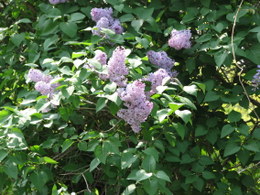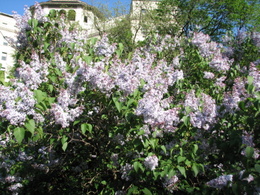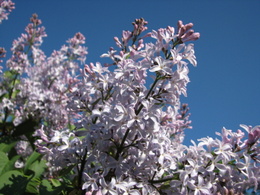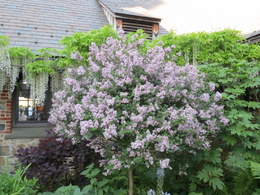Lilac Growing Guide
Lilac (Syringa spp.) is a perennial flowering shrub native to Eastern Europe and Asia that will do well in USDA Zones 3 to 7. To bloom well, lilacs need full sun and bloom around mid-spring.
Its large clusters of blooms range in color from violet, blue, pink, purple and white. Its growth habit can vary depending on the variety with sizes ranging from 4-foot dwarfs to 20-foot-high shrubs. Some tree varieties can reach 30-feet high.
Most lilacs have 10 or more canes, but when it is young you can select one cane to keep and prune away all of the side canes. Keep pruning away any new canes that appear. This forces all of the energy into that one cane giving it a tree-like appearance.
In addition to being deer resistant lilac are a nectar plant for butterflies and pollinators.
They are very hardy and many lilac shrubs live more than 100-years-old, so find a good location where it will be happy.
Starting From Seed
You can start them from seed, but it will take many years to get a flowering plant. Seeds are not commonly available, but you can harvest the seeds from the dried flowers at the end of the blooming season.
A better way to get another lilac plant is to look for a sucker, or offshoot of the root system. Look around the base of the plant for a stem that has a few roots on it. Carefully cut the stem from the mother plant and keeping as much of the soil and roots as possible, plant it in a new hole. Water it in well and keep moist while it is growing new roots. In 4 to 5-years you should have large fragrant blooms.
Soil Preparation
Plant your lilac in full sun in a nice loose well-drained garden soil. They will do best in a neutral soil with a pH around 7.0.
When to Plant
They can be planted in the late spring after the last expected frost or in the fall.
Planting Lilac
Follow the directions on the plant tag. Plant them 5 to 15-feet apart depending on the variety. Dig a hole as deep as the pot and twice as wide. To the soil you just removed add the same amount of good garden soil so you have a nice blend of new and native soil.
Take the plant out of the pot and gently loosen the root ball pulling away any roots that have grown in a circle around the pot.
Place the root ball in the ground at the same level it grew in the pot. Gently spread out the roots and back fill the hole around the roots leaving a shallow depression around your plant. Fill the depression with water to settle the soil around the roots adding more soil if necessary and water again. Water daily tapering off as the roots grow and get established.
Watering and Care
Lilac plants are low maintenance and very easy to care for. All you need to do is add a layer of mulch to help retain moisture and keep out competing weeds. Keep the mulch a few inches from the plant. They should get an inch of water each week and during dry spells give some water to keep the soil moist. They usually do not need any fertilizer, but a light side dressing of organic fertilizer such as Espoma Plant-tone can be placed around the plant in the spring.
Lilac blooms on old wood that grew last year so do not do any pruning until after it has finished blooming. This is the time to do some light trimming to shape it.
To keep it in a lower shrub like form you can remove up to one-third of the oldest and tallest canes after blooming has finished. Cut the canes as close to the ground as you can. This is the preferred method over cutting off the top to reduce its height.
Inspect after blooming and remove any dead wood.
Diseases and Pests
Lilacs are usually free from diseases and pasts. Holes in leaves are usually caused by slugs. Hand picking and placing a layer of Bonide diatomaceous earth around the base of the plant will help to deter them. Reapply after rain or heavy dew.
Some varieties are prone to getting powdery mildew, which does very little to harm the plant. It usually disfigures the leaves to varying degrees and shows up under high humid conditions. Increase air circulation around the plant and thin out excess canes to improve air circulation within the plant.
Popular Varieties
Popular varieties: Bloomerang Dark Purple Lilac Tree, Common Purple Lilac, Common White Lilac, Charles Joly Lilac, Declaration Lilac, Dwarf Korean Lilac, Ivory Silk Lilac Tree, Korean Lilac Tree, Miss Kim Lilac, New Age White Lilac, Royalty Lilac, Sensation Lilac.
Sources: Fast Growing Trees, Nature Hills Nursery, White Flower Farm.
Gardening Thought:
“My lilac trees are old and tall;
I cannot reach their bloom at all.
They send their perfume over trees
And roofs and streets, to find the bees.”
- Louise Driscoll (1875–1957)
Garden Spikes newsletters give you timely information once or twice a month. Subscribe Free to the Garden Times newsletter below.
Your email address will only be used to send you a newsletter and will never be sold. You can unsubscribe at any time.




